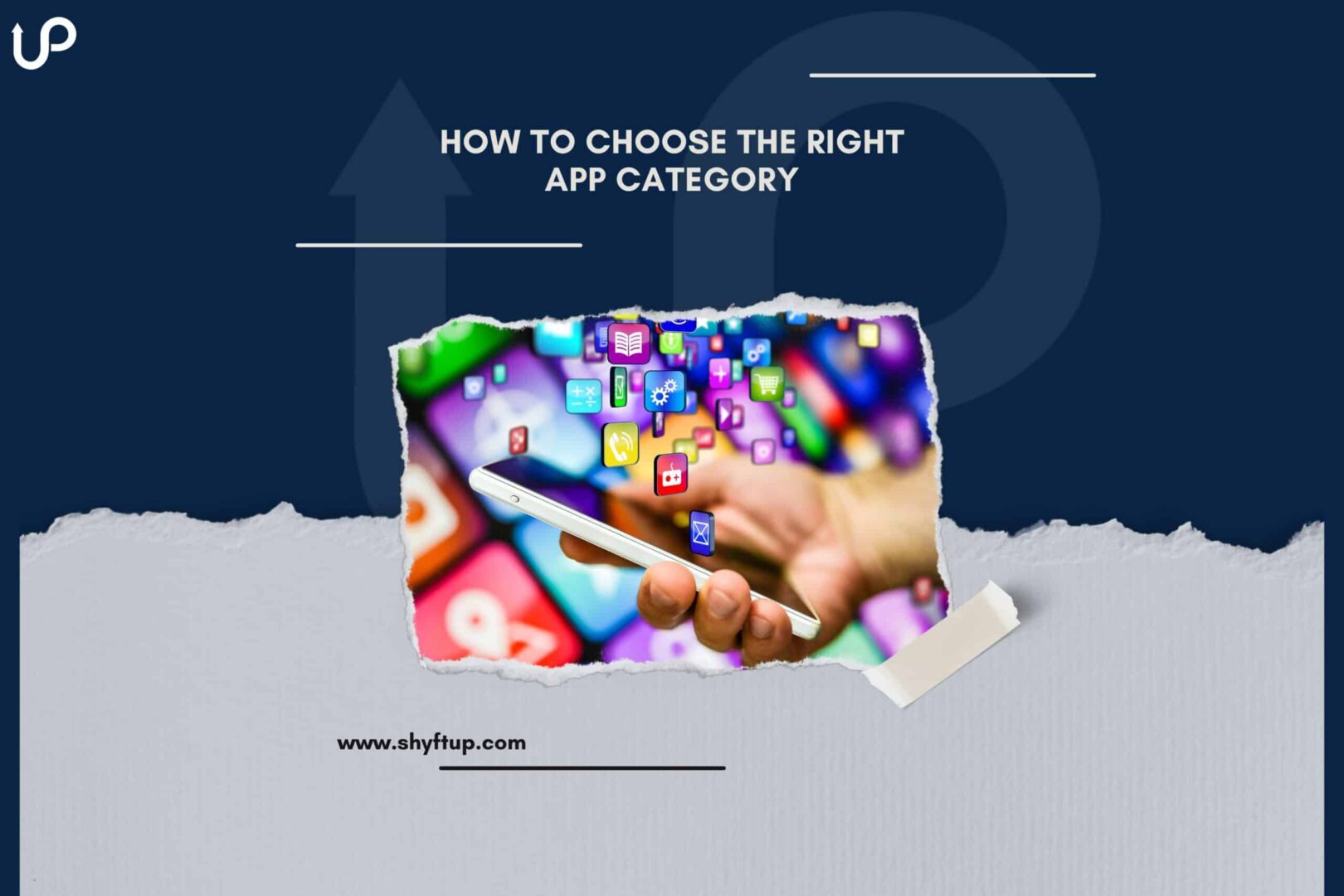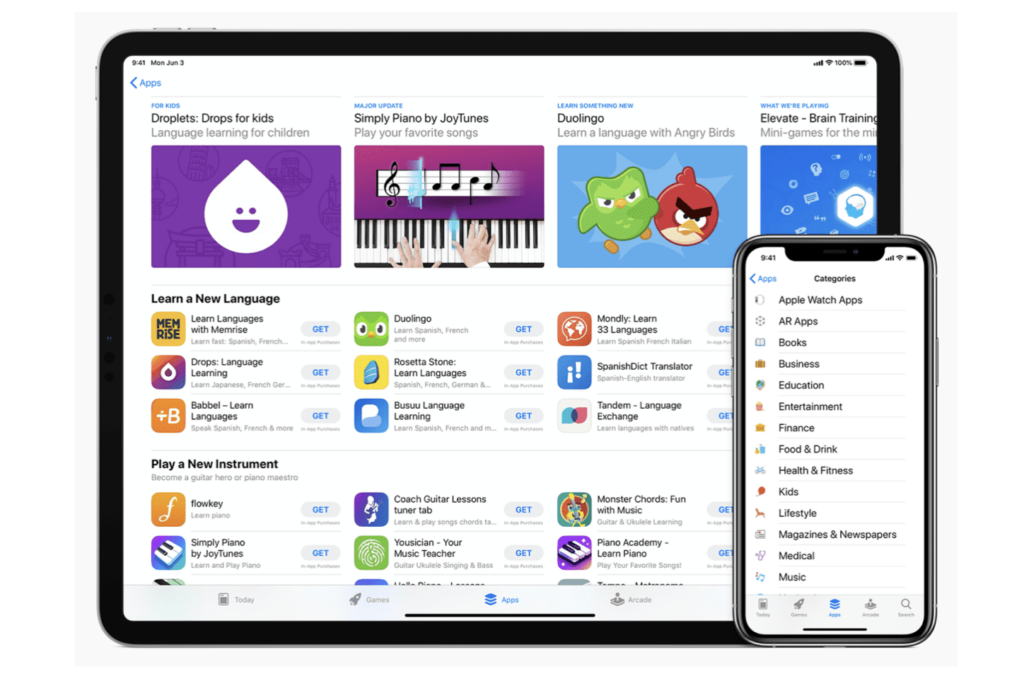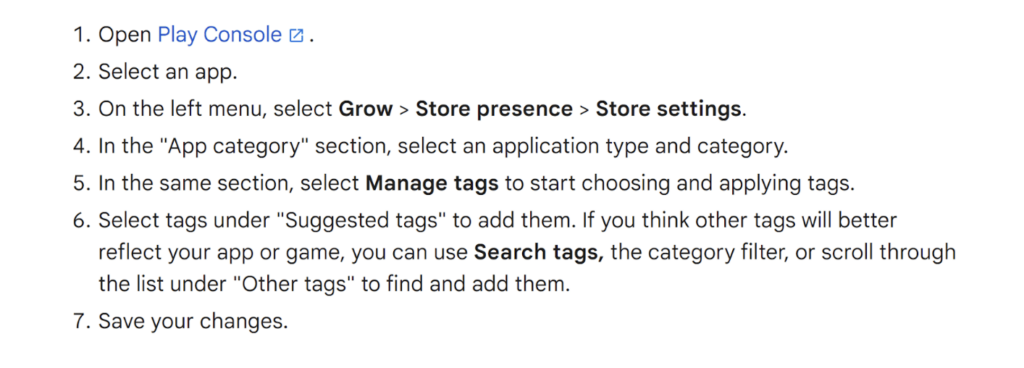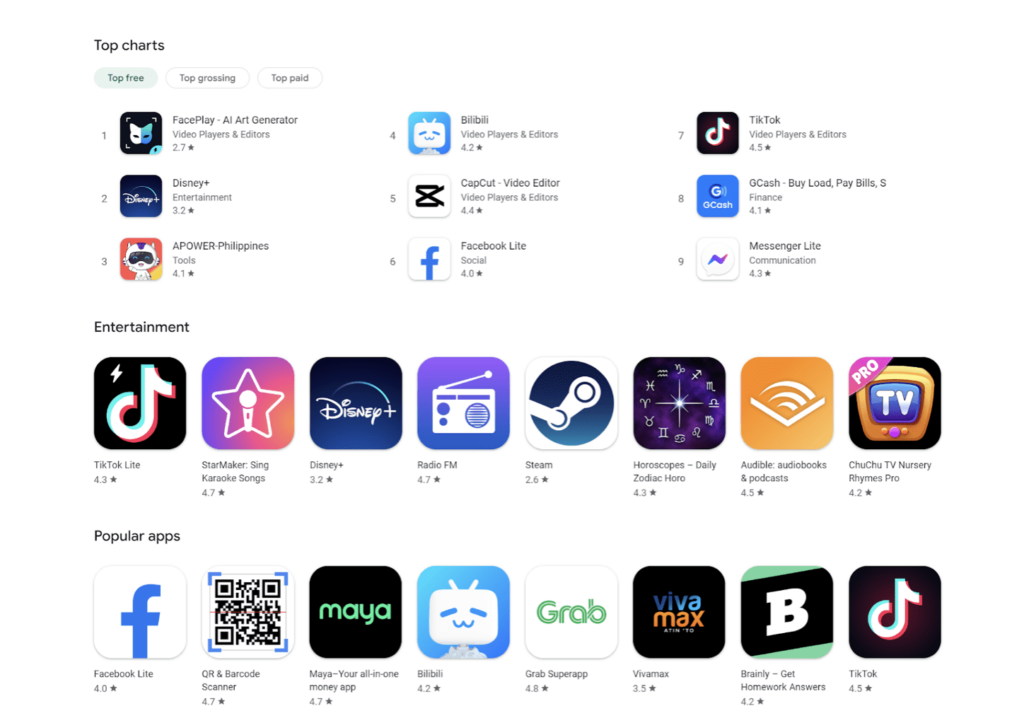
How To Choose The Right App Category
Choosing an app category is an important decision you’ll make when adding your app to Google Play Store and Apple App Store. Use the right category and you’ll improve the discoverability of your app. Use the wrong category and your app could end up in the wrong crowd.
So, how do you choose the correct app category? That’s exactly what you’re going to learn today. In this post, let us discuss what app categories are, how to determine the right category for your app, and how it works in both App Store and Play Store.
Image source: Apple Developer
What are app categories?
An app category in app stores specifies how the app store would treat a specific app. Through the app categories, app stores are able to group together similar apps, so that users can easily find their needed apps and get recommendations easier.
So, for example, in the App Store, you have the Productivity category. Apps that have something to do with time and schedule management, note-taking, self-improvement, and translation could be added to this category.
How does the app category work in the Play Store?
Play Store allows you to choose whether your app is an app or a game. Obviously, if your app is not a game, then you should choose “app” as your application type.
Once you have selected your application type, you would then choose one category. Aside from the category, you have the option to add tags to your app so that Google’s algorithm can better understand the functionality, features, and benefits of your app.
Be sure to choose the right tags because it can affect how Google decides where to put your app across the Play Store.
To choose a category and add tags, simply do the following:
Source: Google Support
How does the app category work in the App Store?
The App Store allows you to choose a primary category and a secondary category. The primary category determines your discoverability on the platform. The secondary category would help decide which other categories your app is most related to.
Special considerations
There are certain types of apps that need special categories. Here are some of them:
- Made for Kids – select this checkbox if your app is made for children ages 11 and below. Be sure that your app complies with the App Review Guidelines for Kids apps.
- Games – select games if your app is a game. You also need to choose up to two Games subcategories.
- Stickers – if your app is for iMessage, choose Stickers as your category.
General tips on choosing app categories
While choosing the app category is straightforward, there are times when it can be confusing. For example, what if you have a photo-editing app that allows you to instantly share it on social media? Should you choose the category for photo editing or for social networking?
To help you, here are three important considerations:
- What is the purpose of your app? Even if you have a lot of features in your app, you simply need to look at its main and core benefits or function. That should tell you what category you should choose.
- Where would your users usually find you? You need to know who your target audience is. The more you are familiar with their needs and situation, the easier you’ll be able to choose the right category.
- Which category contains apps similar to yours? Check who you are competing with. Look for similar and related apps. From there, see in which category the majority of them belong.
Choosing the right app category in the Play Store
To know which app category you should choose, you need to be familiar with the different categories available in the Play Store.
Image source: Google Play Store
Here’s a list of categories along with their examples based on the example categories page on the Google Support website:
Art and Design
- Sketchbooks
- Painter tools
- Art and design tools
- Coloring books
Auto and Vehicles
- Auto shopping
- Auto insurance
- Auto price comparison
- Road safety
- Auto reviews and news
Beauty
- Makeup tutorials
- Makeover tools
- Hair styling
- Beauty shopping
- Makeup simulators
Books and Reference
- Book readers
- Reference books
- Textbooks
- Dictionaries
- Thesaurus
- Wikis
Business
- Document editor/reader
- Package tracking
- Remote desktop
- Email management
- Job search
Comics
- Comic players
- Comic titles
Communications
- Messaging
- Chat/IM
- Dialers
- Address books
- Browsers
- Call management
Dating
- Matchmaking
- Courtship
- Relationship building
- Meeting new people
- Finding love
Education
- Exam preparations
- Study-aids
- Vocabulary
- Educational games
- Language learning
Entertainment
- Streaming video
- Movies
- TV
- Interactive entertainment
Events
- Concert tickets
- Sporting event tickets
- Ticket resales
- Movie tickets
Finance
- Banking
- Payment
- ATM finders
- Financial news
- Insurance, taxes
- Portfolio/trading
- Tip calculators
Food and Drink
- Recipes
- Restaurants
- Food guides
- Wine tasting and discovery
- Beverage recipes
Health and Fitness
- Personal fitness
- Workout tracking
- Diet and nutritional tips
- Health and safety
House and Home
- House and apartment search
- Home improvement
- Interior decoration
- Mortgages
- Real estate
Libraries and Demo
- Software libraries
- Technical demos
Lifestyle
- Style guides
- Wedding and party planning
- How-to guides
Maps and Navigation
- Navigation tools
GPS
- Mapping
- Transit tools
- Public transportation
Medical
- Drug and clinical references
- Calculators
- Handbooks for healthcare providers
- Medical journals and news
Music and Audio
- Music services
- Radios
- Music players
News and Magazines
- Newspapers
- News aggregators
- Magazines
- Blogging
Parenting
- Pregnancy
- Infant care and monitoring
- Childcare
Personalization
- Wallpapers
- Live wallpapers
- Home screen
- Lock screen
- Ringtones
Photography
- Cameras
- Photo editing tools
- Photo management and sharing
Productivity
- Notepad
- To-do list
- Keyboard
- Printing
- Calendar
- Backup
- Calculator
- conversion
Shopping
- Online shopping
- Auctions
- Coupons
- Price comparison
- Grocery lists
- Product reviews
Social
- Social networking
- Check-in
Sports
- Sports news and commentary
- Score tracking
- Fantasy team management
- Game coverage
Tools
- Tools for Android devices
Travel and Local
- Trip booking tools
- Ride-sharing
- Taxis
- City guides
- Local business information
- Trip management tools
- Tour booking
Video Players and Editors
- Video players
- Video editors
- Media storage
Weather
- Weather reports
Choosing the right app category in the App Store
Like in the Play Store, there are plenty of app categories in the App Store. You need to know what these are so that you can choose the right category for your app.
Here’s a table for you to quickly get an idea of these App Store categories based on the Apple Developer website:
| Category | Description | Examples |
| Books | Apps that provide extensive interactivity for content that is traditionally offered in printed form. If you’re planning a more traditional reading experience, you may want to look at publishing an iBook instead. |
|
| Business | Apps that assist with running a business or provide a means to collaborate, edit, or share content. |
|
| Developer Tools | Apps that provide tools for app development, management, and distribution. |
|
| Education | Apps that provide an interactive learning experience on a specific skill or subject. |
|
| Entertainment | Apps that are interactive and designed to entertain and inform the user, and which contain audio, visual, or other content. |
|
| Finance | Apps that perform financial transactions or assist the user with business or personal financial matters. |
|
| Food & Drink | Apps that provide recommendations, instruction, or critique related to the preparation, consumption, or review of food or beverages. |
|
| Games | Apps that provide single or multiplayer interactive activities for entertainment purposes. |
|
| Graphics & Design | Apps that provide tools for art, design, and graphics creation. |
|
| Health & Fitness | Apps related to healthy living, including stress management, fitness, and recreational activities. |
|
| Lifestyle | Apps relating to a general-interest subject matter or service. |
|
| Kids (iOS and iPadOS only) | Apps designed specifically for children ages 11 and under. Age-appropriate apps must be placed in one of three age bands based on their primary audience: 5 and under, 6–8, or 9–11. |
|
| Magazines & Newspapers | Apps that offer auto-renewing subscriptions to magazine or newspaper content. Choose Magazines & Newspapers if you deliver content using an issue-based strategy or are producing interactive versions of a printed periodical. |
|
| Medical | Apps that are focused on medical education, information management, or health reference for patients or healthcare professionals. |
|
| Music | Apps that are for discovering, listening to, recording, performing, or composing music, and that are interactive in nature. |
|
| Navigation | Apps that provide information about current events or developments in areas of interest such as politics, entertainment, business, science, technology, and so on. Choose News if your app serves content via newsreader or digest format, or if your app is for a digital-first or broadcast-first media outlet with frequent content updates. |
|
| Photo & Video | Apps that assist in capturing, editing, managing, storing, or sharing photos and videos. |
|
| Productivity | Apps that make a specific process or task more organized or efficient. |
|
| Reference | Apps that assist the user in accessing or retrieving information. |
|
| Safari Extensions (macOS only) | Apps that offer extensions to help enhance and customize the web browsing experience on Safari |
|
| Shopping | Apps that support the purchase of consumer goods or materially enhance the shopping experience. |
|
| Social Networking | Apps that connect people by means of text, voice, photo, or video. Apps that contribute to community development. |
|
| Sports | Apps related to professional, amateur, collegiate, or recreational sporting activities. |
|
| Travel | Apps that assist the user with any aspect of travel, such as planning, purchasing, or tracking. |
|
| Utilities | Apps that enable the user to solve a problem or complete a specific task. |
|
| Weather | Apps that provide forecasts, alerts, and information related to weather conditions. |
|
Choose the right category
Using the right category holds a major key in your app discoverability. If you want to make sure that you choose the right one or you need advice on how to further improve your app’s search rank, you need to get in touch with ShyftUp.
ShyftUp is among the leading user acquisition agencies that will help you set up your app on the app stores to ensure it is optimized for positive results. They have the right experience, tools, and expertise to improve the overall performance of your app.
Why is choosing an app category important?
An app category determines where your app will be placed in app stores. Thus, choosing the right category would help your potential and existing users to find you.
How do app categories affect ASO?
ASO, App Store Optimization, is the process of improving your app’s visibility on the app stores. Choosing the correct category would positively affect ASO.
What are the most popular app categories?
The most popular app categories are games, health and wellness, and finance.


